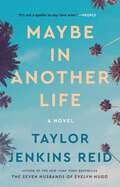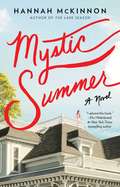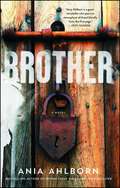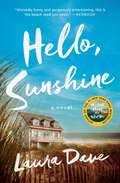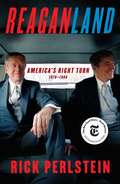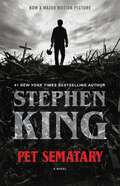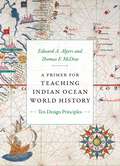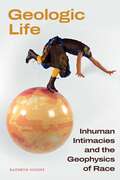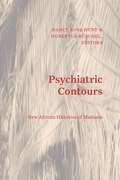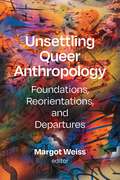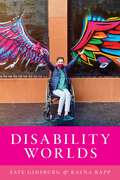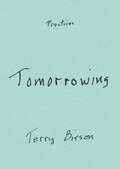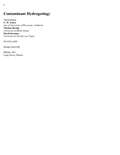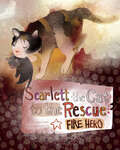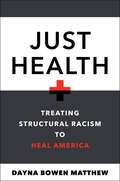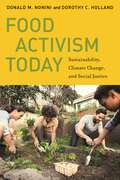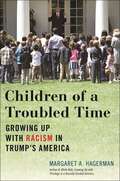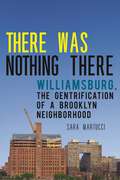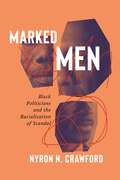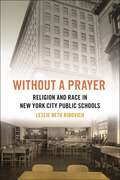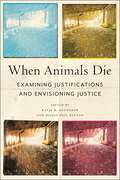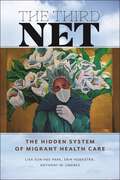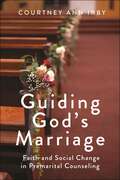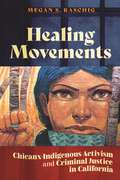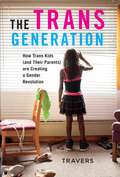- Table View
- List View
Maybe in Another Life: A Novel
by Taylor Jenkins ReidFrom the New York Times bestselling author of The Seven Husbands of Evelyn Hugo A People Magazine Pick * US Weekly &“Must&” Pick * Named &“Best Book of the Summer&” by Glamour * Good Housekeeping * USA TODAY * Cosmopolitan * PopSugar * Working Mother * Bustle * Goodreads A breathtaking new novel about a young woman whose fate hinges on the choice she makes after bumping into an old flame; in alternating chapters, we see two possible scenarios unfold—with stunningly different results.At the age of twenty-nine, Hannah Martin still has no idea what she wants to do with her life. She has lived in six different cities and held countless meaningless jobs since graduating college. On the heels of leaving yet another city, Hannah moves back to her hometown of Los Angeles and takes up residence in her best friend Gabby’s guestroom. Shortly after getting back to town, Hannah goes out to a bar one night with Gabby and meets up with her high school boyfriend, Ethan. Just after midnight, Gabby asks Hannah if she’s ready to go. A moment later, Ethan offers to give her a ride later if she wants to stay. Hannah hesitates. What happens if she leaves with Gabby? What happens if she leaves with Ethan? In concurrent storylines, Hannah lives out the effects of each decision. Quickly, these parallel universes develop into radically different stories with large-scale consequences for Hannah, as well as the people around her. As the two alternate realities run their course, Maybe in Another Life raises questions about fate and true love: Is anything meant to be? How much in our life is determined by chance? And perhaps, most compellingly: Is there such a thing as a soul mate? Hannah believes there is. And, in both worlds, she believes she’s found him.
Mystic Summer: A Novel
by Hannah McKinnon“When two roads diverge...take the one that leads to the beach! Hannah McKinnon delivers a charming gem of a novel in Mystic Summer. I adored this book.” —Elin Hilderbrand, #1 New York Times bestselling author of The Rumor A chance run-in with a college boyfriend puts a young woman’s picture-perfect life in perspective in this warm-hearted and lyrical novel—from the author of The Lake Season.Since finishing graduate school, Maggie Griffin has worked hard to build an enviable life in Boston. She’s an elementary school teacher in a tony Boston suburb, a devoted sister, and a loving aunt. With her childhood best friend’s wedding quickly approaching and her own relationship blossoming, this is the summer she has been waiting for. But when Maggie’s career is suddenly in jeopardy, her life begins to unravel. Stricken, Maggie returns home to seaside Mystic, Connecticut, where she expects to find comfort in family and familiarity. Instead, she runs into Cameron Wilder, a young man from her past who has also returned home, and whose life has taken a turn that puts Maggie’s city struggles in harsh perspective. When tragedy strikes for Cameron, Maggie is faced with big decisions as she weighs what matters most and strives to stay true to the person she’s become. Set against the gorgeous backdrop of a New England summer when past and present collide, Mystic Summer is a gorgeous novel about looking back, moving forward, and the beauty that blooms when fate intervenes.
Brother
by Ania AhlbornFrom the bestselling horror author of Within These Walls and The Bird Eater comes a terrifying novel that follows a teenager determined to break from his family&’s unconventional—and deeply disturbing—traditions.Deep in the heart of Appalachia stands a crooked farmhouse miles from any road. The Morrows keep to themselves, and it’s served them well so far. When girls go missing off the side of the highway, the cops don’t knock on their door. Which is a good thing, seeing as to what’s buried in the Morrows’ backyard. But nineteen-year-old Michael Morrow isn’t like the rest of his family. He doesn’t take pleasure in the screams that echo through the trees. Michael pines for normalcy, and he’s sure that someday he’ll see the world beyond West Virginia. When he meets Alice, a pretty girl working at a record shop in the small nearby town of Dahlia, he’s immediately smitten. For a moment, he nearly forgets about the monster he’s become. But his brother, Rebel, is all too eager to remind Michael of his place…
Hello, Sunshine: A Novel
by Laura DaveFROM THE AUTHOR OF THE NEW YORK TIMES BESTSELLER THE LAST THING HE TOLD ME Best Books of Summer Selection by People, Elle, Redbook, Domino Magazine, Us Weekly, PopSugar, PureWow, InStyle, W Magazine, Harpers Bazaar, Southern Living, Arizona Republic, and Tallahassee Democrat Epicurious Best Foodie Reads Selection Library Reads Pick &“A clever beach bag must-have&” (People) from Laura Dave—the author of the &“addictive&” (Us Weekly) and critically acclaimed bestseller Eight Hundred Grapes—&“a smart, fun read about trying to live an authentic life in the age of social media overload&” (PopSugar).Sunshine Mackenzie has it all…until her secrets come to light. Sunshine is living the dream—she&’s a culinary star with millions of fans, a line of #1 bestselling cookbooks, and a devoted husband happy to support her every endeavor. Sunshine Mackenzie has it all…until she gets hacked. When Sunshine&’s secrets are revealed, her fall from grace is catastrophic. She loses her husband, her show, the fans, and her apartment. She&’s forced to return to the childhood home—and the estranged sister—she&’s tried hard to forget. But what Sunshine does amid the ashes of her own destruction may well save her life. &“A delightfully addictive page-turner&” (WMagazine.com) that takes place in a world where celebrity is a careful construct, Hello, Sunshine is &“wickedly funny and gorgeously entertaining…there is no chance you won&’t consume this golden summer read in one sitting&” (Redbook.com).
Reaganland: America's Right Turn 1976-1980
by Rick PerlsteinA NEW YORK TIMES NOTABLE BOOK OF 2020 From the bestselling author of Nixonland and The Invisible Bridge comes the dramatic conclusion of how conservatism took control of American political power.Over two decades, Rick Perlstein has published three definitive works about the emerging dominance of conservatism in modern American politics. With the saga&’s final installment, he has delivered yet another stunning literary and historical achievement. In late 1976, Ronald Reagan was dismissed as a man without a political future: defeated in his nomination bid against a sitting president of his own party, blamed for President Gerald Ford&’s defeat, too old to make another run. His comeback was fueled by an extraordinary confluence: fundamentalist preachers and former segregationists reinventing themselves as militant crusaders against gay rights and feminism; business executives uniting against regulation in an era of economic decline; a cadre of secretive &“New Right&” organizers deploying state-of-the-art technology, bending political norms to the breaking point—and Reagan&’s own unbending optimism, his ability to convey unshakable confidence in America as the world&’s &“shining city on a hill.&” Meanwhile, a civil war broke out in the Democratic party. When President Jimmy Carter called Americans to a new ethic of austerity, Senator Ted Kennedy reacted with horror, challenging him for reelection. Carter&’s Oval Office tenure was further imperiled by the Iranian hostage crisis, the Soviet invasion of Afghanistan, near-catastrophe at a Pennsylvania nuclear plant, aviation accidents, serial killers on the loose, and endless gas lines. Backed by a reenergized conservative Republican base, Reagan ran on the campaign slogan &“Make America Great Again&”—and prevailed. Reaganland is the story of how that happened, tracing conservatives&’ cutthroat strategies to gain power and explaining why they endure four decades later.
Pet Sematary: A Novel (Signet Book)
by Stephen KingNow a major motion picture! Stephen King&’s #1 New York Times bestseller is a &“wild, powerful, disturbing&” (The Washington Post Book World) classic about evil that exists far beyond the grave—among King&’s most iconic and frightening novels.When Dr. Louis Creed takes a new job and moves his family to the idyllic rural town of Ludlow, Maine, this new beginning seems too good to be true. Despite Ludlow&’s tranquility, an undercurrent of danger exists here. Those trucks on the road outside the Creed&’s beautiful old home travel by just a little too quickly, for one thing…as is evidenced by the makeshift graveyard in the nearby woods where generations of children have buried their beloved pets. Then there are the warnings to Louis both real and from the depths of his nightmares that he should not venture beyond the borders of this little graveyard where another burial ground lures with seductive promises and ungodly temptations. A blood-chilling truth is hidden there—one more terrifying than death itself, and hideously more powerful. As Louis is about to discover for himself sometimes, dead is better…
A Primer for Teaching Indian Ocean World History: Ten Design Principles (Design Principles for Teaching History)
by Edward A. Alpers Thomas F. McDowA Primer for Teaching Indian Ocean World History is a guide for college and high school educators who are teaching Indian Ocean histories for the first time or who want to reinvigorate their courses. It can also serve those who are training future teachers to prepare their own syllabi, as well as those who want to incorporate Indian Ocean histories into their world history courses. Edward A. Alpers and Thomas F. McDow offer course design principles that will help students navigate topics ranging from empire, geography, slavery, and trade to mobility, disease, and the environment. In addition to exploring non-European sources and diverse historical methodologies, they discuss classroom pedagogy and provide curriculum possibilities that will help instructors at any level enrich and deepen standard approaches to world history. Alpers and McDow draw readers into strategically designing courses that will challenge students to think critically about a vast area with which many of them are almost entirely unfamiliar.
Geologic Life: Inhuman Intimacies and the Geophysics of Race
by Kathryn YusoffIn Geologic Life, Kathryn Yusoff theorizes the processes by which race and racialization emerged geologically. Examining both the history of geology as a discipline and ongoing mineral and resource extraction, Yusoff locates forms of imperial geology embedded in Western and Enlightenment thought and highlights how it creates anti-Black, anti-Indigenous, and anti-Brown environmental and racial injustices. Throughout, she outlines how the disciplines of geology and geography---and their conventions: surveying, identifying, classifying, valuing, and extracting—established and perpetuated colonial practices that ordered the world and people along a racial axis. Examining the conceptualization of the inhuman as political, geophysical, and paleontological, Yusoff unearths an apartheid of materiality as distinct geospatial forms. This colonial practice of geology organized and underpinned racialized accounts of space and time in ways that materially made Anthropocene Earth. At the same time, Yusoff turns to Caribbean, Indigenous, and Black thought to chart a parallel geologic epistemology of the "earth-bound" that challenges what and who the humanities have chosen to overlook in its stories of the earth. By reconsidering the material epistemologies of the earth as an on-going geotrauma in colonial afterlives, Yusoff demonstrates that race is as much a geological formation as a biological one.
Psychiatric Contours: New African Histories of Madness (Theory in Forms)
by Nancy Rose Hunt & Hubertus BüschelPsychiatric Contours investigates new histories of psychiatry, derangement, and agitated subjectivities in colonial and decolonizing Africa. The volume lets the multivalent term madness broaden perception, well beyond the psychiatric. Many chapters detect the mad or the psychiatric in unhinged persons, frantic collectives, and distressing situations. Others investigate individuals suffering from miscategorization. A key Foucauldian word, vivacity, illuminates how madness aligns with pathology, creativity, turbulence, and psychopolitics. The archives, patient-authored or not, speak to furies and fantasies inside asylums, colonial institutions, decolonizing missions, and slave ships. The frayed edges of politicized deliria open up the senses and optics of psychiatry’s history in Africa far beyond clinical spaces and classification. The volume also proposes fresh concepts, notably the vernacular, to suggest how to work with emic clues in a granular fashion and telescope the psychiatric within histories of madness. With chapters stretching across much of ex-British and ex-French colonial Africa, Psychiatric Contours attends to the words, autobiographies, and hallucinations of the stigmatized and afflicted as well as of the powerful. Expatriate psychiatrists with cameras, prying authorities, fearful missionaries, and colonial anthropologists enter these readings beside patients, asylums, and boarding schools via research on possession “hysteria” and schizophrenia. In brief, this book demonstrates novel ways of writing not only medical history but all subaltern and global histories.Contributors. Hubertus Büschel, Raphaël Gallien, Matthew M. Heaton, Richard Hölzl, Nancy Rose Hunt, Richard C. Keller, Sloan Mahone, Nana Osei Quarshie, Jonathan Sadowsky, Romain Tiquet
Unsettling Queer Anthropology: Foundations, Reorientations, and Departures
by Margot WeissThis field-defining volume of queer anthropology foregrounds both the brilliance of anthropological approaches to queer and trans life and the ways queer critique can reorient and transform anthropology. Consisting of fourteen original essays by both distinguished and new voices, Unsettling Queer Anthropology advances a vision of queer anthropology grounded in decolonial, abolitionist, Black feminist, transnational, postcolonial, Indigenous, and queer of color approaches. Critically assessing both anthropology’s queer innovations and its colonialist legacies, contributors highlight decades of work in queer anthropology; challenge the boundaries of anthropology’s traditional methodologies, forms, and objects of study; and forge a critical, queer of color, decolonizing queer anthropology that unsettles anthropology’s normative epistemologies. At a moment of revitalized calls to reckon with the white supremacist and settler colonial logics that continue to shape anthropology, this volume advances an anthropology accountable to the vitality of queer and trans life.Contributors. Jafari Sinclair Allen, Tom Boellstorff, Erin L. Durban, Elijah Adiv Edelman, Lyndon K. Gill, K. Marshall Green, Brian A. Horton, Nikki Lane, Martin F. Manalansan IV, Shaka McGlotten, Scott L. Morgensen, Kwame Otu, Juno Salazar Parreñas, Lucinda Ramberg, Sima Shakhsari, Savannah Shange, Anne Spice, Margot Weiss, Ara Wilson
Disability Worlds
by Faye Ginsburg Rayna RappIn Disability Worlds, Faye Ginsburg and Rayna Rapp chronicle and theorize two decades of immersion in New York City’s wide-ranging disability worlds as parents, activists, anthropologists, and disability studies scholars. They situate their disabled children’s lives among the experiences of advocates, families, experts, activists, and artists in larger struggles for recognition and rights. Disability consciousness, they show, emerges in everyday politics, practices, and frictions. Chapters consider dilemmas of genetic testing and neuroscientific research, reimagining kinship and community, the challenges of “special education,” and the perils of transitioning from high school. They also highlight the vitality of neurodiversity activism, disability arts, politics, and public culture. Disability Worlds reflects the authors’ anthropological commitments to recognizing the significance of this fundamental form of human difference. Ginsburg and Rapp’s conversations with diverse New Yorkers reveal the bureaucratic constraints and paradoxes established in response to the disability rights movement, as well as the remarkable creativity of disabled people and their allies who are opening pathways into both disability justice and disability futures.
Tomorrowing (Practices)
by Terry BissonFor twenty years, Terry Bisson published a regular “This Month in History” column in the science fiction magazine Locus. Tomorrowing collects these two decades of memorable events---four per month---each set in a totally different imaginary yet possible, inevitable yet avoidable future. From the first AI president to the first dog on Mars to the funeral of Earth’s last glacier, these stories are speculative SF at its most (and least) serious. Collected as a series for the first time, Tomorrowing will amuse, alarm, intrigue, entertain, and like all good science fiction, make readers think. Bisson’s short stories have won every major award in science fiction, including the Hugo and the Nebula, but never, ever anything for this series.
Contaminant Hydrogeology
by C. W. Fetter Thomas Boving David KreamerTremendous progress has been made in the field of remediation technologies since the second edition of Contaminant Hydrogeology was published two decades ago, and its content is more important than ever. Recognizing the extensive advancement and research taking place around the world, the authors have embraced and worked from a larger global perspective. Boving and Kreamer incorporate environmental innovation in studying and treating groundwater/soil contamination and the transport of those contaminants while building on Fetter's original foundational work. <P><P>Thoroughly updated, expanded, and reorganized, the new edition presents a wealth of new material, including new discussions of emerging and potential contaminant sources and their characteristics like deep well injection, fracking fluids, and in situ leach mining. New sections cover BET and Polanyi adsorption potential theory, vapor transport theory, the introduction of the Capillary and Bond Numbers, the partitioning interwell tracer testing technique for investigating NAPL sites, aerial photographic interpretation, geophysics, immunological surveys, high resolution vertical sampling, flexible liner systems, groundwater tracers, and much more.
Scarlett the Cat to the Rescue: Fire Hero (Animal Heroes Ser.)
by Nancy LoewenWhen her home in Brooklyn goes up in flames, brave Scarlett won’t give up until her kittens are safe. See the story unfold as Scarlett the fearless feline risks her life to save her family.
Just Health: Treating Structural Racism to Heal America
by Dayna Bowen MatthewChoice Outstanding Academic Title 2023The author of the bestselling Just Medicine reveals how racial inequality undermines public health and how we can change itWith the rise of the Movement for Black Lives and the feverish calls for Medicare for All, the public spotlight on racial inequality and access to healthcare has never been brighter. The rise of COVID-19 and its disproportionate effects on people of color has especially made clear how the color of one’s skin is directly related to the quality of care (or lack thereof) a person receives, and the disastrous health outcomes Americans suffer as a result of racism and an unjust healthcare system.Timely and accessible, Just Health examines how deep structural racism embedded in the fabric of American society leads to worse health outcomes and lower life expectancy for people of color. By presenting evidence of discrimination in housing, education, employment, and the criminal justice system, Dayna Bowen Matthew shows how racial inequality pervades American society and the multitude of ways that this undermines the health of minority populations. The author provides a clear path forward for overcoming these massive barriers to health and ensuring that everyone has an equal opportunity to be healthy. She encourages health providers to take a leading role in the fight to dismantle the structural inequities their patients face. A compelling and essential read, Just Health helps us to understand how racial inequality damages the health of our minority communities and explains what we can do to fight back.
Food Activism Today: Sustainability, Climate Change, and Social Justice (Social Transformations in American Anthropology #6)
by Donald M. Nonini Dorothy C. HollandIlluminates how food activism has been taking shape and where it is headedAs climate change, childhood obesity, and food insecurity accelerate at an alarming pace, activists around the country are working to address the pressing need for healthy and sustainable solutions to feed the population. Food Activism Today investigates the new approaches food activists are taking as they formulate alternatives to the current unsustainable agro-industrial food system.Drawing on ethnographic research conducted over an eleven-month period in both urban and rural North Carolina, the volume addresses questions about the moral visions of food activists, how class and racial hierarchies infuse some food activism movements, and how food activism relates to climate change and imminent ecological collapse. Exploring food activism around both local and sustainable food production and food security for lower-income people, the volume finds surprisingly little overlap, with the two movements seemingly remaining distinct approaches (at least for now) to issues around the food system, climate change, and access to healthy food choices.As the US moves into an era in which climate change and neoliberal tensions are conjoined in a looming political crisis, Food Activism Today looks at where food activism is headed, the ethics and issues surrounding alternative approaches to food production, and how food production is related to broader issues of climate change.
Children of a Troubled Time: Growing Up with Racism in Trump's America
by Margaret A. HagermanProvides a child’s-eye perspective on how the culture wars are playing out in our nation’s schoolsKids are at the center of today’s “culture wars”—pundits, politicians, and parents alike are debating which books they should be allowed to read, which version of history they should learn in school, and what decisions they can make about their own bodies. And yet, no one asks kids what they think about these issues.In Children of a Troubled Time, award-winning sociologist Margaret A. Hagerman amplifies the voices of children who grew up during Trump’s presidency and explores how they learn about race in America today. Hagerman interviewed nearly fifty children between the ages of ten to thirteen in two dramatically different political landscapes: Mississippi and Massachusetts. Hagerman interviewed kids who identified as conservative and liberal in both places as well as kids from different racial groups. She discovered remarkably similar patterns in the ideas expressed by these children. Racism, she asserts, is not just a local or regional phenomenon: it is a broad American project affecting childhoods across the country.In Hagerman’s emotionally compelling interviews, children describe what it is like to come of age during years of deep political and racial divide, and how being a kid during the Trump era shaped their views on racism, democracy, and America as a whole. Children’s racialized emotions are also central to this book: disgust and discomfort, fear and solidarity, dominance and apathy.As administrators, teachers, and parents struggle to help children make sense of our racially and politically polarized nation, Hagerman offers concrete examples of the kinds of interventions necessary to help kids learn how to become members of a multi-racial democracy and to avoid the development of far-right thinking in the white youth of today. Children of a Troubled Time expands our understanding of how the rising generation grapples with the complexities of racism and raises critical questions about the future of American society.
There Was Nothing There: Williamsburg, The Gentrification of a Brooklyn Neighborhood
by Sara MartucciExplores the daily, lived effects of gentrification for neighborhood residentsWilliamsburg, Brooklyn, a prominent neighborhood in New York City, has undergone significant transformations through cycles of divestment and gentrification. In 2005, the city’s decision to rezone the Williamsburg waterfront for high-rise housing led to a profound alteration of the physical, cultural, and social landscape. The result was the rapid influx of thousands of new residents, many of them wealthy, giving rise to luxury buildings, upscale dining, and high-end retail stores alongside new norms and expectations for the neighborhood. These new arrivals coexist with earlier gentrifiers as well as working-class Latinx and white ethnic populations, creating a complex and layered community.In There Was Nothing There, Sara Martucci draws on four decades of residents’ memories and experiences, providing insights into the tensions, contradictions, and inequalities brought about by gentrification. Martucci focuses on the individual level, exploring how residents form connections to their neighborhoods and how these attachments shape their daily experiences of public spaces, local consumption, and evaluations of safety. As established residents, bohemians, and newcomers vie for ownership and belonging, their perceptions give rise to conflicting narratives that define the essence of the neighborhood.While the book’s primary focus is Williamsburg, it serves as a cautionary tale about the broader impact of state-led gentrification, extending far beyond Brooklyn. The text underscores the potential consequences of such transformations for the future of cities, urging readers to consider the implications of cultural displacement, homogenization, and increased surveillance as gentrification permeates urban landscapes.
Marked Men: Black Politicians and the Racialization of Scandal
by Nyron N. CrawfordExamines Black Americans’ suspicion about the potential political harassment of Black elected officialsIn Marked Men, Nyron N. Crawford offers a novel perspective on political scandal, corruption, and racial politics in the United States. Contrary to traditional beliefs that politicians are forgiven for their transgressions because of the benefits they provide their constituents, Crawford argues that Black Americans view political misdeeds by Black elected officials through a lens of suspicion towards the criminal legal system.Crawford’s work reveals that Black Americans often question the motivations behind investigations and indictments of Black politicians, expressing concern that such actions by the state are intended to undermine, embarrass, and harass Black leaders. Through a mixed-method approach including experiments, case studies, and survey data, Crawford illustrates that racialized suspicion shapes the way Black voters rally to protect their embattled Black political representatives.The book challenges conventional wisdom by highlighting how a tolerance of corruption is not the driving force behind the support for wayward politicians. Instead, racialized mistrust of the criminal justice system plays a pivotal role. By shedding light on this dynamic, Marked Men examines the complexities of political scandals and the intricate interplay between race and politics in contemporary America. The study calls for a deeper understanding of the motivations and attitudes of Black voters, prompting readers to reconsider prevailing assumptions about political accountability and forgiveness in the context of race.
Without a Prayer: Religion and Race in New York City Public Schools (North American Religions #24)
by Leslie Beth RibovichReframes religion’s role in twentieth-century American public educationThe processes of secularization and desegregation were among the two most radical transformations of the American public school system in all its history. Many regard the 1962 and 1963 US Supreme Court rulings against school prayer and Bible-reading as the end of religion in public schools. Likewise, the 1954 Brown v. Board of Education case is seen as the dawn of school racial equality. Yet, these two major twentieth-century American educational movements are often perceived as having no bearing on one another.Without a Prayer redefines secularization and desegregation as intrinsically linked. Using New York City as a window into a national story, the volume argues that these rulings failed to successfully remove religion from public schools, because it was worked into the foundation of the public education structure, especially how public schools treated race and moral formation. Moreover, even public schools that were not legally segregated nonetheless remained racially segregated in part because public schools rooted moral lessons in an invented tradition—Judeo-Christianity—and in whiteness.The book illuminates how both secularization and desegregation took the form of inculcating students into white Christian norms as part of their project of shaping them into citizens. Schools and religious and civic constituents worked together to promote programs such as juvenile delinquency prevention, moral and spiritual values curricula, and racial integration advocacy. At the same time, religiously and racially diverse community members drew on, resisted, and reimagined public school morality.Drawing on research from a number of archival repositories, newspaper and legal databases, andvisual and material culture, Without a Prayer shows how religion and racial discrimination were woven into the very fabric of public schools, continuing to inform public education’s everyday practices even after the Supreme Court rulings.
When Animals Die: Examining Justifications and Envisioning Justice (Animals in Context)
by Katja M. Guenther Julian Paul KeenanA groundbreaking collection that explores human–animal relations and deaths with depth and hopeWhen Animals Die is an innovative collection of essays that delves into the intricate and uneasy dynamics between humans and other-than-human animals, particularly concerning animal deaths, which are predominantly caused by humans. This groundbreaking book brings together prominent scholars from various disciplines to address the challenging field of animal death studies, incorporating perspectives from social sciences, humanities, biological sciences, and perspectives from beyond academia.The collection explores profound questions about the experience of animal death for both animals and humans. It examines how humans rationalize animal deaths and utilize deceased animals, and sheds light on the interconnectedness of animal death with issues like race, colonialism, gender, capitalism, and other systems of inequality that humans have established and perpetuated.By confronting these pertinent issues, When Animals Die seeks to deepen our awareness of the relationship between animal death and humanity’s involvement in it. While grappling with the reality of humans’ impact on the earth, the collection offers hope for an alternative future that does not entail the mutual destruction of human and other-than-human animals.
The Third Net: The Hidden System of Migrant Health Care (Health, Society, and Inequality #5)
by Lisa Sun-Hee Park Erin Hoekstra Anthony M. JimenezReveals the presence of an informal system of valuable support and care for marginalized migrantsThe United States’ health care system not only consists of a formal safety net, but also an informal and disjointed network of organizations that offer basic care to millions of migrants. This “Third Net” provides free or low-cost health care for the undocumented, low-income, and uninsured migrants who are excluded from the formal system. This groundbreaking study sheds light on the existence of the Third Net and its implications for the overall inequalities in the US health care system.The Third Net is made up of diverse providers with varying levels of service, organizational culture, and mission. These providers operate in unconventional settings, such as mobile clinics on wheels; pop-up clinics in repurposed spaces; and unlicensed, makeshift clinics run by health activists. Despite their unassuming appearances, these clinics are vital resources for marginalized populations that often go unnoticed by the general public, revealing the shortcomings of our formal health care system.By examining these alternative health care spaces, the authors expose the inequities entrenched in the broader health care system and urge a reevaluation of it entirely in order to address these injustices.
Guiding God's Marriage: Faith and Social Change in Premarital Counseling
by Courtney Ann IrbyExamines how religious leaders use premarital counseling to influence how we view intimacyIt is well-known that the institution of marriage has changed dramatically in the past few decades. However, very little research has focused on the role of religious institutions in helping couples form and maintain their relationships.Guiding God’s Marriage offers an examination of Christian marriage preparation programs, exploring their efforts to stabilize the institution of marriage and highlighting the tension between individualism and community in people’s relational lives. Marriage preparation programs offer a useful lens through which to trace shifts in both religious and family institutions because they set out clear and intentional articulations of marriage ideologies and gendered relationship scripts by faith communities. By documenting the changes in content and practices of Christian premarital education along with its advice regarding what makes a good marriage, the book charts the ways that religious communities have been transformed by and have helped to contribute to the individualization of faith and relationships.Featuring archival research as well as first hand observations of four marriage preparation courses—two Protestant and two Catholic—along with seventy interviews with participating couples and leaders of these and other programs, the book offers a rare view of visions about how to realize a successful and faith-filled relationship. This examination of marriage classes offers key insight into how religious communities have responded to cultural changes in marriage, gender, sexuality, and intimacy.
Healing Movements: Chicanx-Indigenous Activism and Criminal Justice in California
by Megan S. RaschigHow a grassroots abolitionist project of cultural healing counters the carceral state in a Chicanx community in CaliforniaFor many, gang involvement can be a guaranteed life sentence, a force which traps them in an inescapable cycle of violence even if it does not lead to actual prison time. Healing Movements explores the work of formerly gang-involved Chicanx men and women in California who draw on the social connections made during their gang-involved years to forge new pathways for cultural healing and countering the carceral system.Known colloquially as the “movement of healing,” this Chicanx-Indigenous abolitionist project based in Salinas, California, was spurred on by a series of four police homicides of Latino men in 2014. Organizing around such issues as police brutality and mass incarceration, these collectives—two of which are discussed in this book, one mixed-gender, and the other women-only—turned to their often obscured Mesoamerican ancestry to find new resources for building a different future for themselves and subsequent generations.Drawing on extensive fieldwork conducted in Salinas, Healing Movements reveals how these communities have taken shape in large part through a conscious effort to uplift Chicanx-Indigenous culture and ceremonial practices. By tapping into their Indigeneity, the members of these collectives access a wealth of new resources to shape their future, opening up novel ways to organize and build strong relational ties that are noteworthy to anyone invested in abolitionist work.
The Trans Generation: How Trans Kids (and Their Parents) are Creating a Gender Revolution
by TraversWinner, 2019 PROSE Award for Anthropology, Criminology and Sociology, presented by the Association of American Publishers A groundbreaking look at the lives of transgender children and their families Some “boys” will only wear dresses; some “girls” refuse to wear dresses; in both cases, as Ann Travers shows in this fascinating account of the lives of transgender kids, these are often more than just wardrobe choices. Travers shows that from very early ages, some at two and three years old, these kids find themselves to be different from the sex category that was assigned to them at birth. How they make their voices heard—to their parents and friends, in schools, in public spaces, and through the courts—is the focus of this remarkable and groundbreaking book. Based on interviews with transgender kids, ranging in age from 4 to 20, and their parents, and over five years of research in the US and Canada, The Trans Generation offers a rare look into what it is like to grow up as a trans child. From daycare to birthday parties and from the playground to the school bathroom, Travers takes the reader inside the day-to-day realities of trans kids who regularly experience crisis as a result of the restrictive ways in which sex categories regulate their lives and put pressure on them to deny their internal sense of who they are in gendered terms. As a transgender activist and as an advocate for trans kids, Travers is able to document from first-hand experience the difficulties of growing up trans and the challenges that parents can face. The book shows the incredible time, energy, and love that these parents give to their children, even in the face of, at times, unsupportive communities, schools, courts, health systems, and government laws. Keeping in mind that all trans kids are among the most vulnerable to bullying, violent attacks, self-harm, and suicide, and that those who struggle with poverty, racism, lack of parental support, learning differences, etc, are extremely at risk, Travers offers ways to support all trans kids through policy recommendations and activist interventions. Ultimately, the book is meant to open up options for kids’ own gender self-determination, to question the need for the sex binary, and to highlight ways that cultural and material resources can be redistributed more equitably. The Trans Generation offers an essential and important new understanding of childhood.
